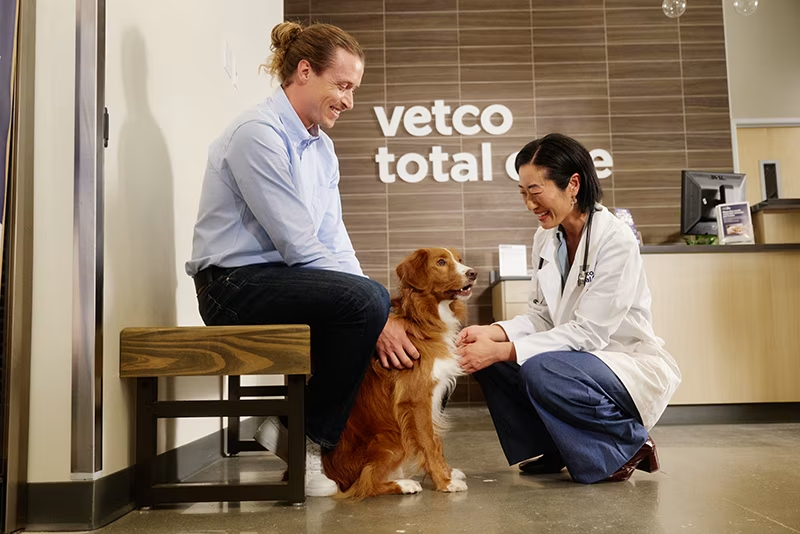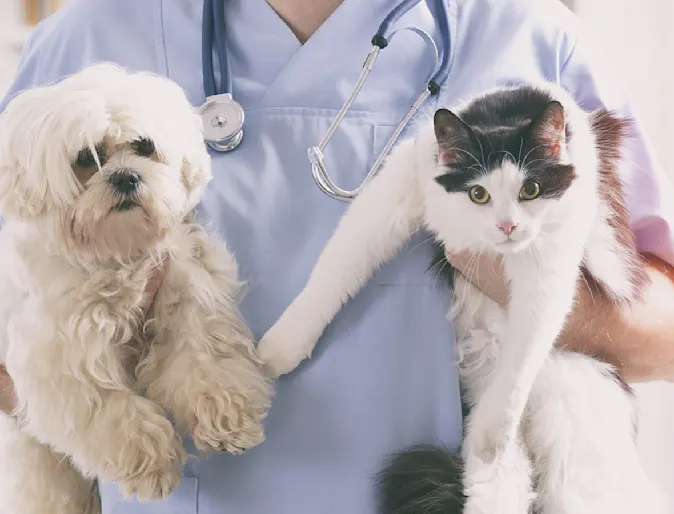What Happens During a Visit to an emergency vet? Step-by-Step Walkthrough
What Happens During a Visit to an emergency vet? Step-by-Step Walkthrough
Blog Article
All About Vet Surgical Procedure: Understanding the Relevance of Expert Take Care Of Your Animals
Vet surgery is an essential element of family pet health care. It includes various procedures, from regular optional surgical procedures to immediate interventions. Comprehending the intricacies of these surgeries can help family pet owners make educated choices. The prep work, implementation, and recovery stages are important for making certain the health of pets. With correct understanding, proprietors can navigate the intricacies of vet treatment. What factors should be thought about before an animal goes through surgery?
Kinds Of Veterinarian Surgeries
When a family pet needs surgical intervention, understanding the various kinds of vet surgeries can aid animal proprietors make educated decisions. Vet surgeries can be extensively categorized into three major kinds: optional, urgent, and emergency surgical procedures. Elective surgical treatments, such as spaying or neutering, are prepared treatments that are not instantly deadly. Immediate surgical procedures, like those for foreign body removal, have to be performed quickly yet are not life-threatening in the moment. Emergency situation surgical treatments, such as those dealing with severe trauma or inner blood loss, are important and require prompt attention.Additionally, surgical treatments can differ in complexity, varying from minimally intrusive laparoscopic procedures to a lot more considerable open surgical procedures. Each sort of surgery carries its very own threats and recuperation processes. Understanding these classifications allows family pet owners to take part in significant discussions with vets, resulting in far better end results for their precious pets.
Preparing for Your Pet's Surgical procedure
Getting ready for a family pet's surgical treatment includes an extensive checklist to guarantee all basics are covered. Effective interaction with the veterinarian is crucial for comprehending the procedure and any kind of needed pre-operative actions - canine tplo surgery. Furthermore, having clear post-operative care directions will help proprietors supply the very best assistance for their recovering family pets
Pre-Surgery List Basics
Guaranteeing a smooth surgical experience for a pet requires mindful preparation and focus to information. A pre-surgery checklist is necessary for pet dog owners to follow. Initially, verifying the arranged surgery date and time is crucial. Owners must additionally verify that their pet dog has actually not eaten according to the vet's directions, generally for 8-12 hours prior to surgery. Collecting required clinical records, consisting of inoculation background, is vital for the vet's testimonial. It is additionally a good idea to prepare a comfy space in your home for the animal's recuperation after surgery. Owners ought to have a strategy for transportation to and from the veterinary clinic, making certain that the pet dog is safe and secure and comfortable throughout the trip. Complying with these actions can considerably enhance the medical experience.
Connecting With Your Veterinarian

Effective communication with the vet is essential for a successful medical experience for pet dogs. Proprietors must be prepared to review their family pet's case history, including any type of pre-existing conditions, medicines, and allergies. This info helps the veterinarian evaluate threats and customize the surgical strategy appropriately. In addition, family pet owners should ask questions regarding the procedure, anesthesia, and anticipated end results to assure they totally recognize the process. Clearing up any questions can ease anxiousness for both the pet and the owner. It is likewise vital to connect any behavior modifications or concerns observed in the pet dog leading up to the surgery. Inevitably, clear discussion promotes trust and partnership, ensuring that pets get the most effective possible treatment during their surgical journey.
Post-Operative Treatment Recommendations
After reviewing the procedure with the vet, pet owners must concentrate on post-operative care instructions to assist in a smooth healing for their pets. These guidelines commonly consist of checking the surgical site for indications of infection, such as redness or discharge. Pet dogs might require to be kept calm and restricted to avoid extreme activity that could interfere with recovery. Discomfort monitoring is crucial, so owners need to adhere to the vet's advice on carrying out medicines. Additionally, nutritional constraints might be suggested to avoid gastrointestinal upset. Normal follow-up appointments are necessary to ensure appropriate recovery and attend to any worries. By sticking to these post-operative treatment guidelines, pet proprietors can substantially contribute to their animal's healing and general well-being.
The Surgical Refine Explained
The surgical process for pet dogs incorporates important actions that assure their safety and recuperation. Pre-surgery prep work are crucial for decreasing dangers, while post-operative treatment guidelines play an essential role in advertising healing. Recognizing these elements assists pet owners navigate the surgical experience better.
Pre-Surgery Preparations
Before an animal undertakes surgical treatment, numerous vital prep work have to happen to assure a safe and successful procedure. First, a thorough veterinary assessment is important to evaluate the family pet's general health and determine any type of possible threats. This might consist of blood tests, imaging, or various other diagnostics. The vet will certainly also go over anesthesia choices customized to the animal's certain requirements. Additionally, pet proprietors are normally advised to withhold food and water for a defined time before surgical treatment to reduce the risk of problems throughout anesthetic. It is necessary for owners to offer a full case history, including any type of medications or allergies, making sure the medical group has all needed details. Appropriate interaction and adherence to pre-surgery standards can greatly enhance the end result of the procedure.
Post-Operative Treatment Guidelines
Correct post-operative treatment is crucial for making sure a family pet's healing following surgical treatment. After the treatment, family pets need to be monitored carefully for any type of indicators of complications, such as too much blood loss, swelling, or unusual habits. It is necessary to comply with the vet's instructions concerning medicines, consisting of painkiller and prescription antibiotics. Pet dogs ought to be kept in a silent, comfortable atmosphere to minimize stress and anxiety and promote healing. Restricting task is crucial; short, leashed walks might be essential, but jumping or running must be avoided. Routine follow-up appointments need to be set up to assess the healing process. In addition, the medical website needs to be maintained tidy and completely dry, with any type of indications of infection reported to a veterinarian immediately. Sticking to these guidelines boosts healing end results.
Anesthetic and Discomfort Administration
Efficient anesthetic and pain management are important elements of veterinary surgical treatment, making certain that animals stay comfy and safe throughout the procedure. Veterinarians examine each family pet's private demands, taking into consideration factors such as age, weight, health and wellness condition, and the sort of surgery being performed.Anesthesia methods commonly include a combination of pre-anesthetic medicines, induction agents, and inhalant anesthetics, permitting exact control over the pet's level of awareness. Surveillance during surgical procedure is critical; vets continually observe essential signs to address any type of potential problems promptly.Pain administration strategies might entail opioids, non-steroidal anti-inflammatory medicines (NSAIDs), and anesthetics, tailored to the pet's click to find out more details situation. This diverse technique aids decrease pain and advertises a smoother medical experience. By prioritizing efficient anesthesia and discomfort monitoring, vet specialists improve the total well-being of pet dogs going through operations, ensuring they obtain the highest possible criterion of treatment.
Post-Operative Treatment and Recuperation
Following surgery, the focus moves to post-operative treatment and recuperation, which is necessary for making certain a family pet's safe return to normal tasks. Throughout this duration, animals call for a quiet, comfy setting to help healing. Owners ought to carefully monitor their animals for any type of indications of pain or unusual behavior.Veterinary guidelines typically consist of specific instructions related to medicine administration, injury care, and dietary modifications. It is vital to abide by these recommendations to decrease difficulties and advertise recovery. Pet dogs might need to be restricted from energetic tasks, such as running or leaping, during their recovery period (24 hour vet near me).Regular follow-up visits with the vet enable surveillance of the family pet's progress and timely changes to the care plan. Giving emotional support and companionship can also boost a pet dog's recuperation experience, aiding to relieve stress and anxiety and anxiousness. Overall, diligent post-operative treatment plays a substantial role in accomplishing an effective recovery
Identifying Complications After Surgical Procedure
Just how can family pet proprietors recognize issues after surgical procedure? Recognition of certain signs is important for making sure the well-being of family pets throughout recuperation. Common indicators consist of extreme swelling, redness, or discharge at the surgical site, which may represent infection. Additionally, consistent discomfort, suggested by yawping or reluctance to relocate, need to prompt immediate see this here attention. Modifications in cravings or water consumption can additionally suggest problems; a decrease in these behaviors may signify discomfort or distress.Moreover, pet dog owners ought to monitor their pets for any kind of unusual habits, such as lethargy or problem breathing, as these can be indicators of severe concerns. Throwing up or looseness of the bowels complying with surgery might require immediate vet assessment. Recognizing these problems early can substantially impact an animal's healing procedure, stressing the value of vigilance and punctual communication with a vet for any kind of concerning signs.
The Duty of Veterinary Experts in Surgical Care
Vet professionals play a vital role in making certain the safety and success of surgical treatments for pet dogs, specifically adhering to surgical procedure when monitoring and care are paramount. These specialists include vets, vet technicians, and support personnel, every one of whom add specialized skills to the surgical process.Before surgery, vets conduct comprehensive analyses to analyze the pet dog's wellness, ensuring that any type of hidden conditions are taken care of. During the procedure, the medical team provides anesthetic, maintains sterile settings, and keeps track of crucial signs, very important for reducing risks.Post-operative treatment is just as substantial; veterinary specialists observe for complications, take care of discomfort, and overview proprietors on healing methods. Their experience allows them to recognize very early signs of distress or infection, making certain timely intervention. Eventually, the collaborative initiatives of vet professionals in surgical treatment cultivate a safe setting, advertising the health of pets throughout the medical trip.

Often Asked Inquiries
How Do I Choose the Right Veterinary Surgeon for My Pet dog?
Picking the appropriate vet specialist involves looking into credentials, reading testimonials, and assessing the center's setting. It is important to assess the surgeon's experience with specific procedures and site their interaction design when choosing.
What Prevail Misconceptions Concerning Vet Surgeries?
Usual false impressions regarding veterinarian surgical procedures include ideas that they are always dangerous, unnecessary, or for emergency situations. Many pet dog owners underestimate the benefits of preventive treatments and the ability associated with veterinary medical care.
Just How Much Will My Pet's Surgical treatment Price?
The expense of a pet dog's surgical treatment can differ considerably based upon variables such as the kind of procedure, the vet's experience, and geographic place (24 hour vet bellingham). Usually, costs vary from a few hundred to a number of thousand bucks

Can My Pet Eat Prior To Surgical Treatment?
Before surgical treatment, it is typically advised that pets abstain from consuming for a details period. This fasting helps minimize the danger of difficulties throughout anesthetic. Proprietors must consult their vet for specific directions customized to their family pet's demands.
What happens if My Family Pet Has Pre-Existing Health And Wellness Conditions?
When a family pet has pre-existing health problems, it's important for the veterinarian to analyze these aspects before surgery. This examination assurances suitable safety measures are taken, minimizing threats and optimizing the pet's total safety throughout the treatment.
Report this page